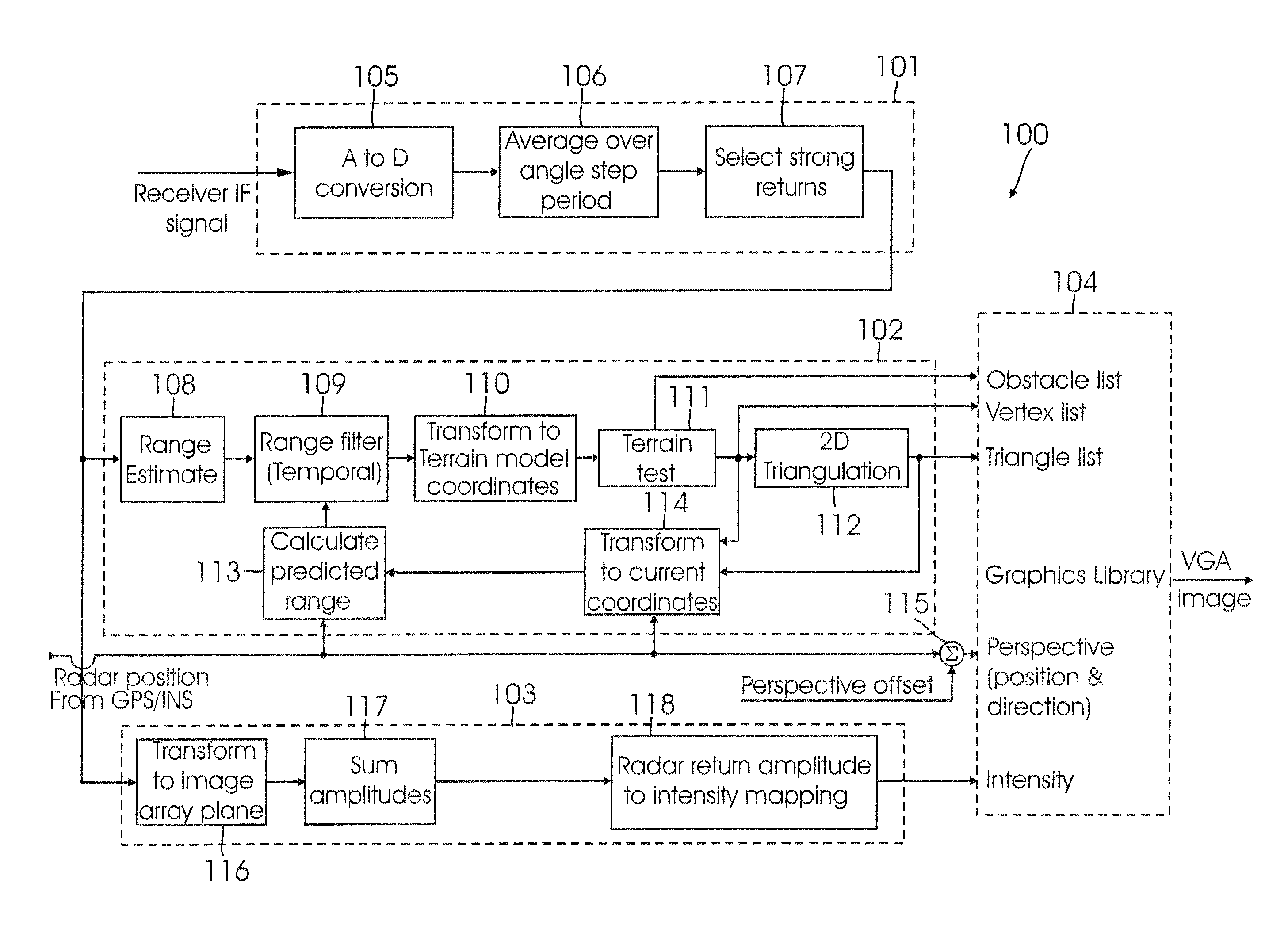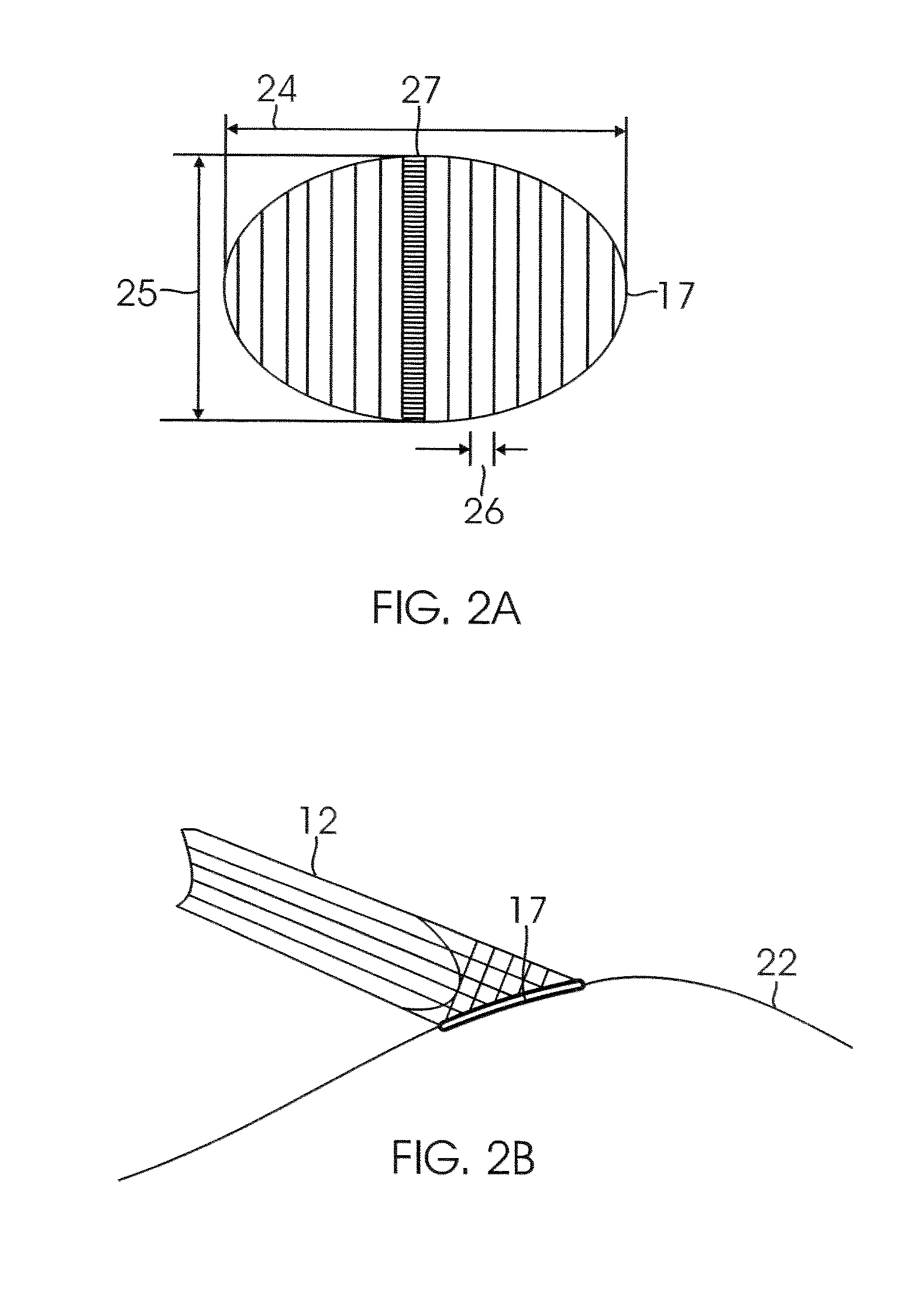System and method for 3D radar image rendering
a technology of radar image and system, applied in the field of radar imaging methods, can solve the problems of not being able to detect objects with vertical dimensions not stored in the database, not providing all three coordinate dimensions in the conventional radar imaging system, and not being able to provide the proper height of objects in the image, etc., to enhance depth perception and ridgeline detection, enhance image quality, and enhance usability.
- Summary
- Abstract
- Description
- Claims
- Application Information
AI Technical Summary
Benefits of technology
Problems solved by technology
Method used
Image
Examples
Embodiment Construction
[0027]The radar imaging system described herein employs a three-dimensional (3D) radar scan having range, azimuth, and elevation data components. Data are obtained by direct measurement of a location of a surface cell, range of return for each step in the angle scan, and amplitude of the return from the cell. The availability of all three dimensions for each point allows the transforming of all data into a Cartesian frame (X, Y horizontal plane coordinates, Z vertical coordinate). The X, Y coordinates of all cells causing returns are connected by lines to form triangles, thereby creating a 3D “mesh” of triangles (using prior art techniques) that describe the detected surface, as shown in FIGS. 5-7.
[0028]As described above briefly, the detected surface model comprises an arrangement or “mesh” of contiguous triangular areas, the edges of which are straight lines. By using straight lines on the display device to connect the vertices of the triangles for which the position uncertainty i...
PUM
 Login to View More
Login to View More Abstract
Description
Claims
Application Information
 Login to View More
Login to View More - R&D
- Intellectual Property
- Life Sciences
- Materials
- Tech Scout
- Unparalleled Data Quality
- Higher Quality Content
- 60% Fewer Hallucinations
Browse by: Latest US Patents, China's latest patents, Technical Efficacy Thesaurus, Application Domain, Technology Topic, Popular Technical Reports.
© 2025 PatSnap. All rights reserved.Legal|Privacy policy|Modern Slavery Act Transparency Statement|Sitemap|About US| Contact US: help@patsnap.com



